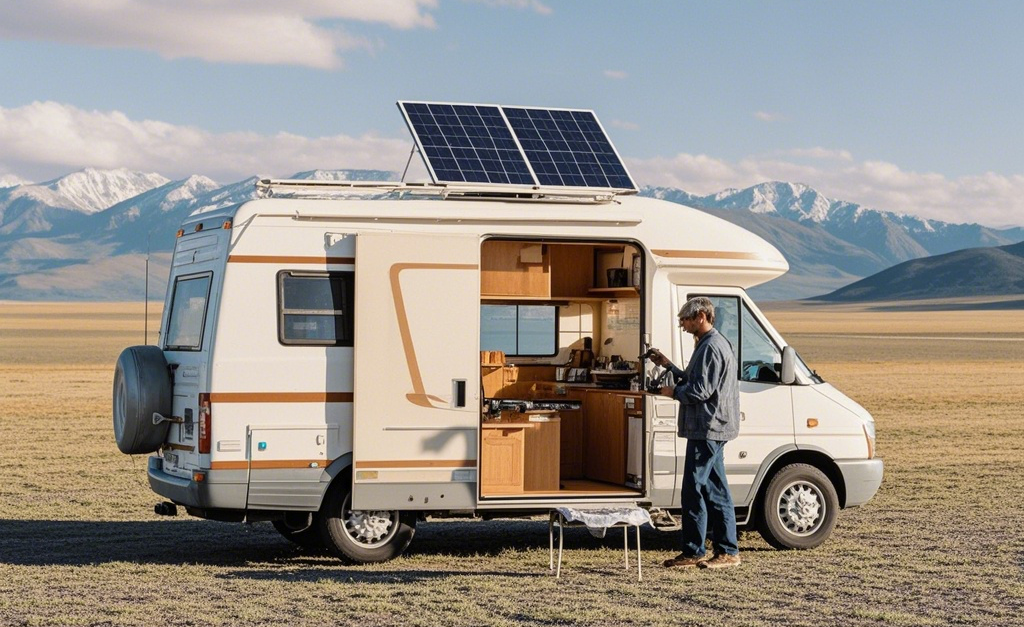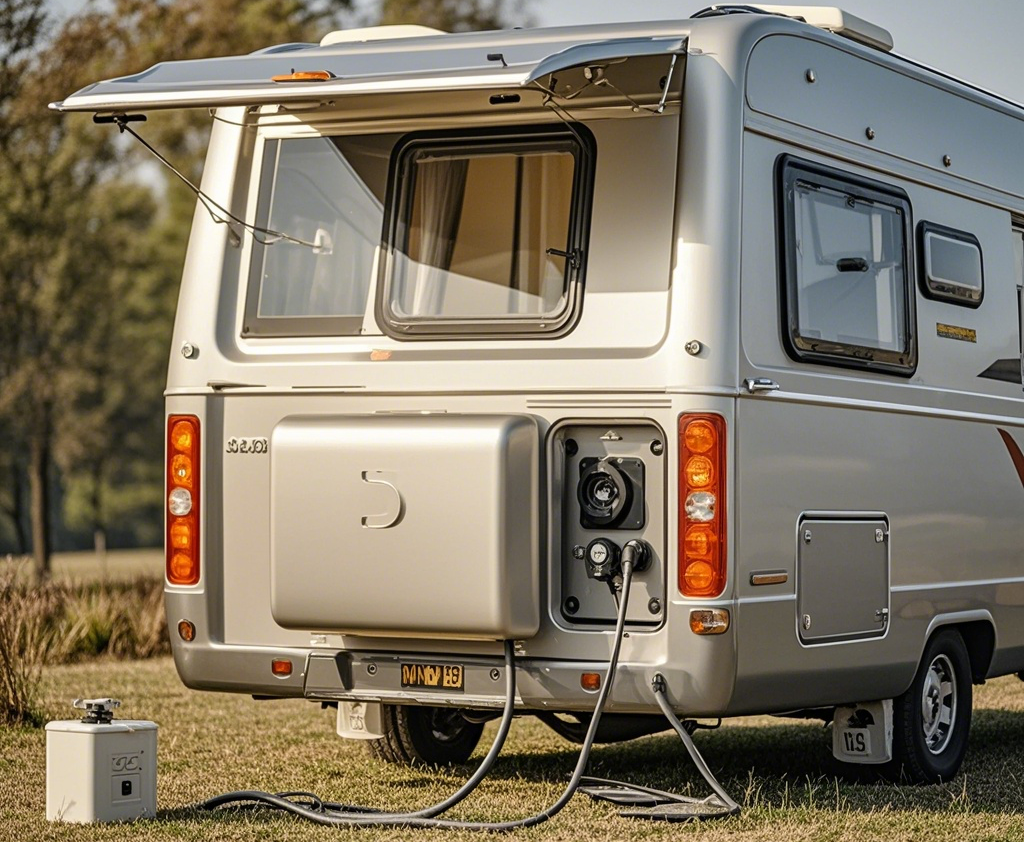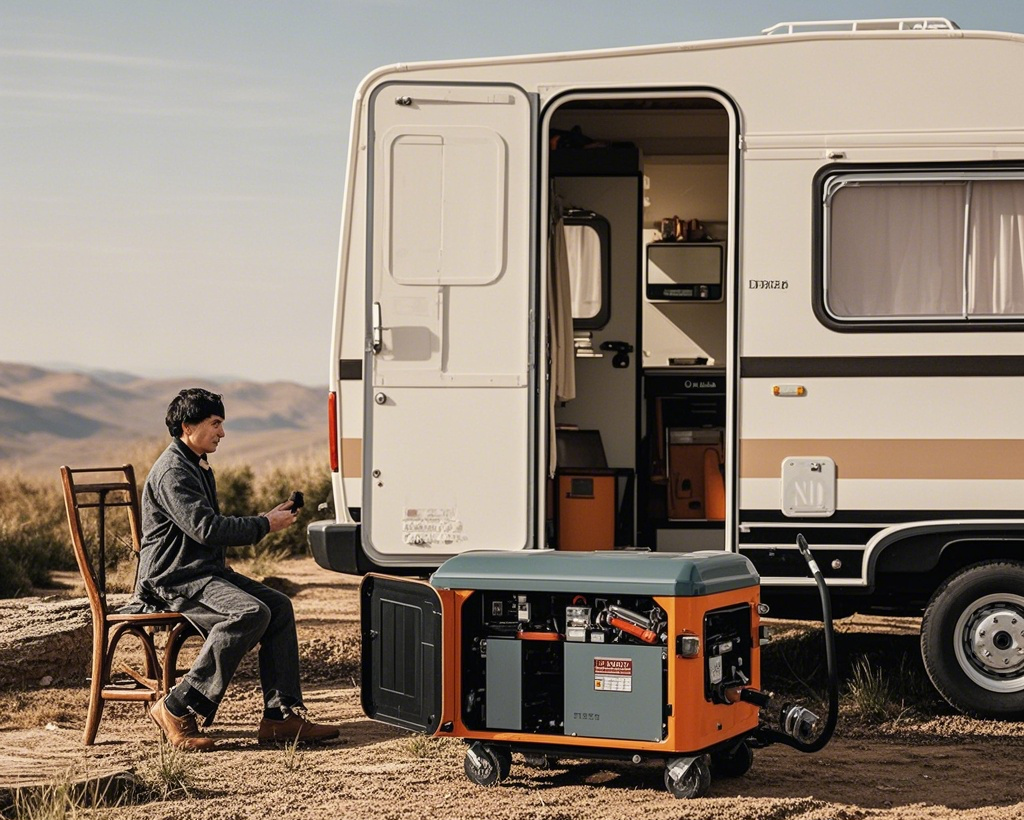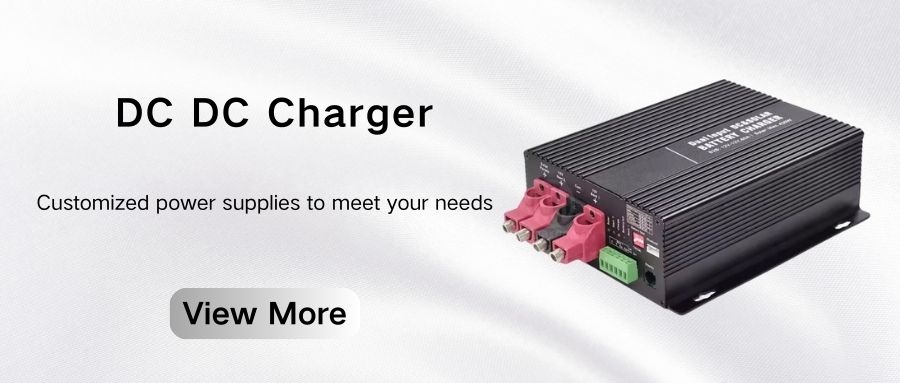
Speaking of RV power, the first thing you need to understand is that RVs are generally divided into two modes: 12V DC (also known as 24V or 48V) and 220V AC. There are two types of batteries in RVs. The first is the front car starting battery, also known as the main battery. This battery power source is not used to power RV Life equipment, so a second battery (usually called Life Battery) is required to store the power required for RV Life
Front car power generation
Front car power generation is the most recommended power source. Install a DC charger (also known as a battery isolator) between the main battery and the life battery. When the vehicle is running, the engine charges the main battery and powers the life battery through the DC charger. After parking, the life battery can be powered independently to avoid the risk of excessive consumption of the main battery power, ensuring that the vehicle can be started at any time.

Advantages:
High convenience: It can be automatically charged while driving, which is very convenient.
Continuous power: The vehicle generates electricity continuously while driving, and the charging efficiency is high.
Protect the main battery: The battery isolator ensures that the power consumption of household appliances does not affect the main battery, ensuring the vehicle's starting ability.

Solar energy
Solar panels are installed on the roof to charge the home battery using light energy. However, solar power supply depends on light. The intensity of the sun and the power and number of solar panels directly affect the amount of power generated. If the weather continues to rain, there may be a shortage of electricity.
Advantages:
Environmentally friendly and quiet: Using solar energy can also be quieter and reduce environmental pollution.
Long-term investment: Solar panels have a long service life and can maintain your home battery and extend its service life.

External power supply
External power supply charging refers to charging the home battery directly with the power supply. There is an "external power supply" interface on the side of the RV
Advantages:
Simple and convenient: As long as you find a charging socket, you can easily charge the home battery.

Generator power generation
Use a fuel generator to charge your home battery Use a fuel generator to generate electricity and charge your home battery
Advantages:
Flexibility: You can generate electricity at any time by simply transporting fuel.
Disadvantages:
Noise and pollution: Fuel generators generate a lot of noise and pollution when running, which seriously affects the comfort of your travel life.
Bulky and difficult to transport: The generator is heavy and requires effort to transport.

Summary
Taking all factors into consideration, the most recommended power source for RV life is the front-mounted vehicle generator. It is not only convenient and efficient, but also protects the main battery while ensuring that the power needs of your RV are met when driving. By combining the front car generator with solar energy and external mains power, you can achieve multi-functional power supply to meet different power needs. On the other hand, it is recommended to avoid using generators to generate electricity as much as possible because it has the disadvantages of noise and pollution.
By configuring the power supply reasonably, the stable power supply brings you closer to poetry.







